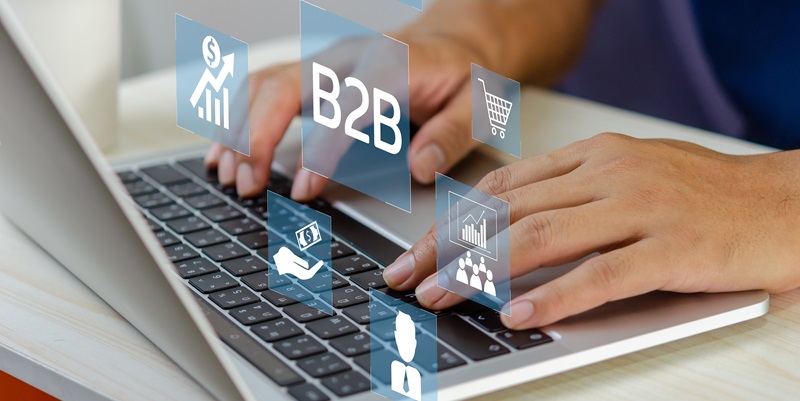In today’s crowded B2B marketplace, inboxes are overwhelmed with marketing emails, making it tough for businesses to get noticed. Marketers must become more strategic and creative with their email tactics to grab attention and drive action in 2024. The key is to implement strategies that resonate with evolving customer preferences and leverage technological advancements.
To thrive, marketers should focus on personalizing content to the recipient’s industry, job role, and stage in the buying journey. Interactive emails incorporating polls, videos, and downloadable content can boost engagement. Furthermore, the use of AI for predictive analytics can help tailor messaging and timing to when prospects are most likely to engage.
Additionally, integrating emails with other marketing channels, like social media and webinars, can create a seamless customer experience that enhances brand recognition and trust. By adopting these cutting-edge approaches, B2B email campaigns can rise above the noise, captivate their audience, and lead to meaningful conversions.
Customization and Segmentation for Personalized Outreach
Diving into the heart of efficient email strategies, it is unmistakable that customization and segmentation are crucial in personalizing interactions between businesses. Understanding your audience and categorizing them according to various criteria, like their industry, company size, or interaction with your brand, can massively improve the relevance of your emails. This is because B2B clients desire content that caters directly to their needs and industry challenges, and when you do so, your engagement rates are bound to increase.
Dynamic content and advanced personalization technologies hold the key to unlocking the full potential of customization. By tailoring each email to match the recipient’s interests and pain points, you can ensure that your message strikes a chord with them. The result is a relationship with your prospects that feels less like a generic sales pitch and more like a thoughtful conversation centered around their specific needs, facilitating a deeper connection and paving the way for fruitful business relations.
Crafting Value-Driven Content
In the realm of B2B email marketing, standing out means equipping emails with content that truly adds value. Top-tier campaigns are recognized for their ability to address the specific needs and challenges of business buyers through rich, insightful content. By sharing in-depth articles, case studies, and industry reports, your company can emerge as an authoritative voice, building a trustful and credible relationship with your audience. Effective B2B content should not just enlighten but also urge readers to take action, leading them to further engage with your brand. Create a content strategy that captivates your audience’s interest and guides them towards your call to action, be it learning more or making a purchase. This approach to email content not only makes your messages anticipated and welcomed but positions you as an indispensable asset within your recipients’ professional circles.
Mobile Device Optimization
The ascension of mobile technology dictates that emails must be optimized for consumption on smaller screens. As mobile devices increasingly become the go-to for checking emails, it’s imperative for B2B marketers to adapt their strategies accordingly. Ensuring that your content is responsive, that it seamlessly flows across all device types and sizes, is no longer an advantage—it’s a norm. With appropriate mobile optimizations, your emails avoid being truncated or worse, deleted, because they couldn’t visually adapt to a recipient’s screen.
Responsive email design emphasizes legibility and ease of navigation, which are critical components for maintaining your audience’s attention and improving click-through rates. Emails must be meticulously crafted with clear, compelling calls to action that prompt recipients to engage directly from their handheld device. Opt for a design that accommodates thumb-friendly links and enough white space to make the reading and interaction process effortless for the mobile user. This attention to detail signifies that you value the recipient’s time and experience, which is paramount in email marketing success.
The Power of Optimization and A/B Testing
The secret to enhancing B2B email campaigns lies in the consistent endeavor to optimize and perfect each component. A/B testing, or split testing, serves as a strategic compass, guiding marketers to discern the elements of an email that return the most engagement and conversions. Through A/B testing, marketers can gather empirical data, revealing which subject lines, call-to-action buttons, email copy, and design layouts resonate best with their audience.
Optimization based on A/B testing results not only improves the current campaigns but also acts as an insightful repository of knowledge for future marketing initiatives. Marketers can methodically tweak and test, moving beyond guesswork to make calculated decisions that bolster open rates, click-through rates, and ultimately, the bottom line. This continuous refinement process is essential for adapting to the changing tastes and trends of your B2B audience, thereby enhancing the efficacy of your digital marketing efforts.
Embracing Lifecycle Marketing and Automation
Automation has revolutionized B2B email marketing by sending timely, relevant communications that align with the customer lifecycle. Marketers can now effectively target prospects at each stage, guiding them from awareness to conversion and beyond. Automated emails can trigger based on specific actions, presenting content tailored to the recipient’s relationship with the brand.
Integrating lifecycle marketing with behavioral triggers and dynamic content creates emails that seem custom-made, enhancing engagement and aiding the purchase journey. Automated touchpoints can welcome new leads, re-engage dormant accounts, or reward loyalty, each reinforcing the brand’s value proposition. This personalized strategy is vital in maintaining a brand’s presence throughout the customer journey and is instrumental in boosting both client acquisition and retention among B2B audiences. Automation in this way ensures that every communication is an opportunity to advance the prospect towards a conversion.

